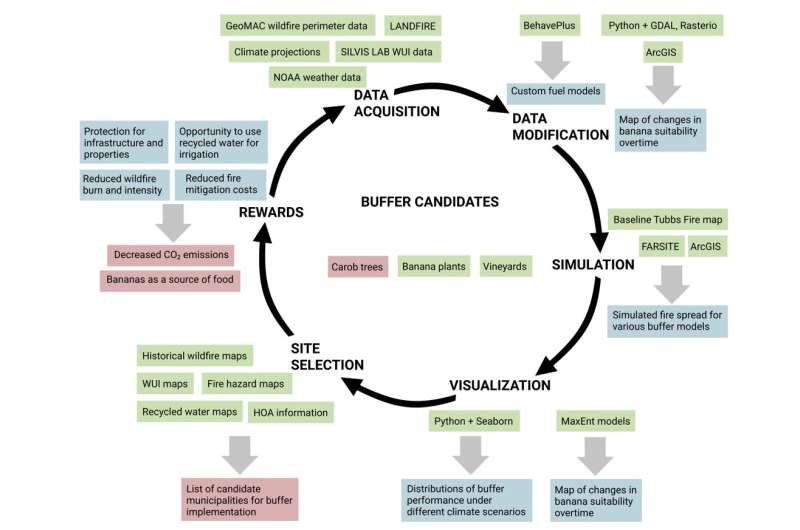This article has been reviewed according to Science X's editorial process and policies. Editors have highlighted the following attributes while ensuring the content's credibility:
fact-checked
peer-reviewed publication
proofread
Investigating banana trees as buffers to fight wildfires

Fire buffers composed of irrigated banana trees could slow and calm wildfires and generate profit for residents of fire-prone regions, according to a study published in PNAS Nexus. Climate change is increasing wildfire risk. Wildfires in the Western United States doubled in frequency between 1984 and 2015. At the same time, more people are living in the wildland-urban interface (WUI) than ever before, an area that often has high or extreme fire risk.
Barath Raghavan and colleagues investigate the potential of banana trees to act as a multifunctional fire buffer in the WUI. Banana trees have a high water content, ideal for stopping fire. When irrigated by recycled water, they can produce high-value crops.
The team used a suite of models to simulate the behavior of the real 2017 Tubbs Fire, in Sonoma County, California, if banana tree buffers had been in place. Banana tree buffers 633 meters wide would have reduced the intensity of the fire by 96%, according to the model—a similar effect to that produced by treating forest areas with mechanical thinning and prescribed burning.
When not slowing and calming fires, the banana trees could generate an estimated profit of $76,136 per hectare. Even if burned, bananas will resprout from their corms. Succulent ground covers could prevent flammable grasses from growing among the bananas.
According to the authors, the results should be generally applicable to much of California, and to other areas with a Mediterranean climate, including regions of Mexico, Chile, Australia, and South Africa, and the Mediterranean Basin itself.
More information: Xiao Fu et al, Edible fire buffers: Mitigation of wildfire with multifunctional landscapes, PNAS Nexus (2023). DOI: 10.1093/pnasnexus/pgad315
Journal information: PNAS Nexus
Provided by PNAS Nexus





















